A LOOK AT THE COASTAL MEADOW IN 2015
The weather was hot and dry in the last days of July 2015 ...
... when the photographs you'll see in this post were taken. In this opening shot. you are looking at a small moth on the Eryngium campestre plant.
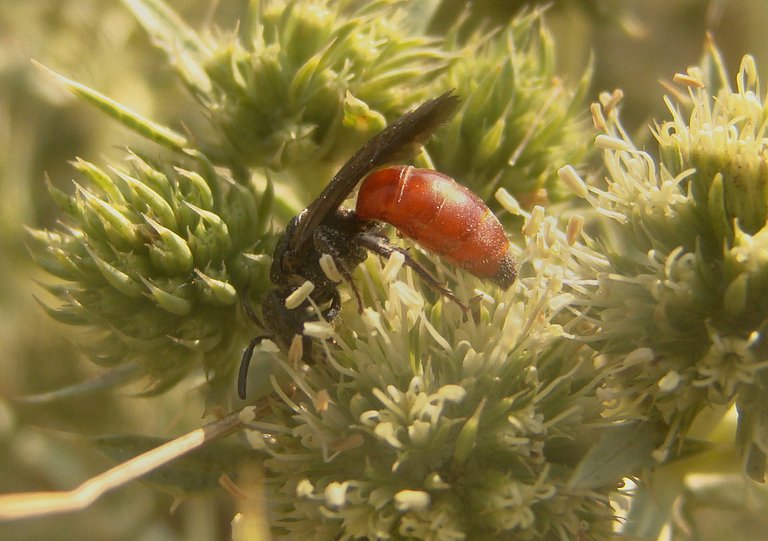
This is the Sphecodes monilicornis ...
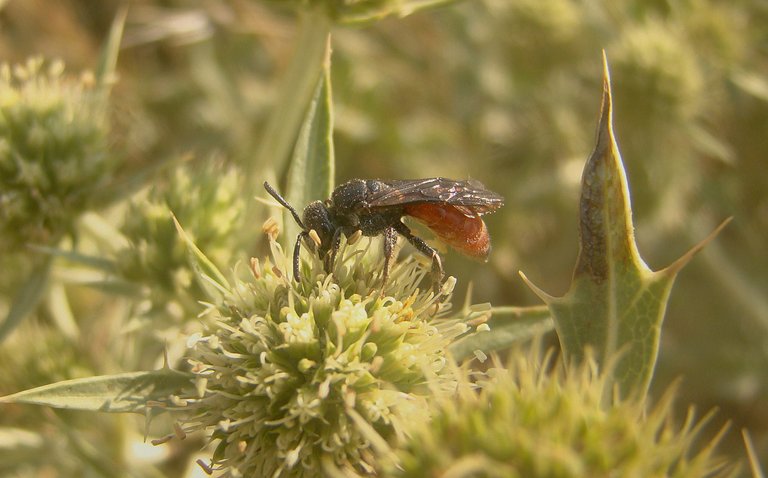
... a small bee from the Halictidae family. Females of this species invade the nests of various solitary bees that share the same habitat. They destroy the resident eggs or grubs and replace them with their own eggs.
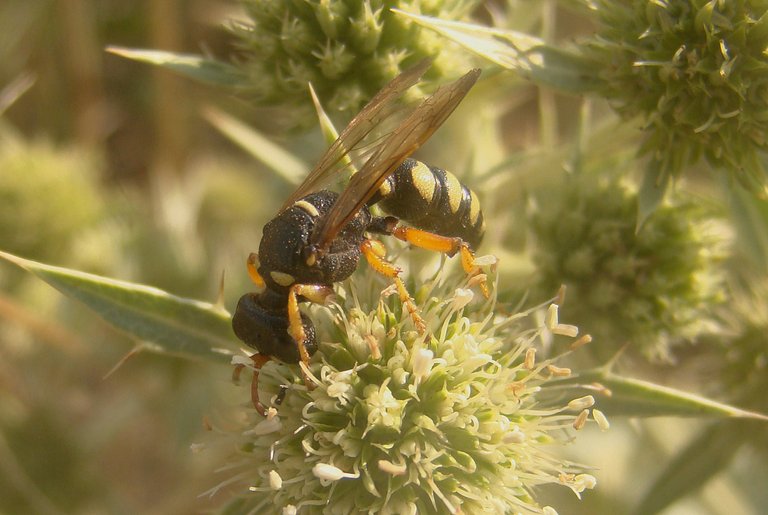
Nomada fucata, a bee that, at first sight, looks like a wasp is another species that parasitizes the nests of other bees.
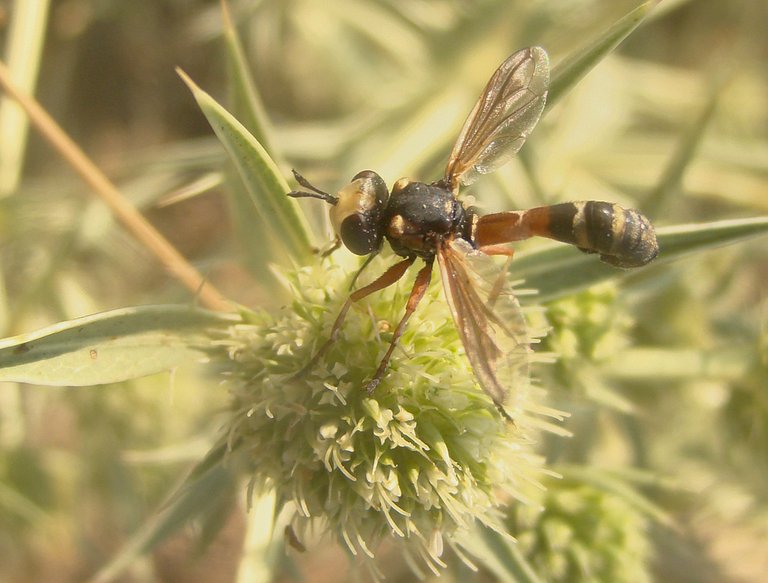
Eryngium campestre flowers attract a wide variety of pollinators in summer. This is the Physocephala rufipes, a fly from the Conopidae family.
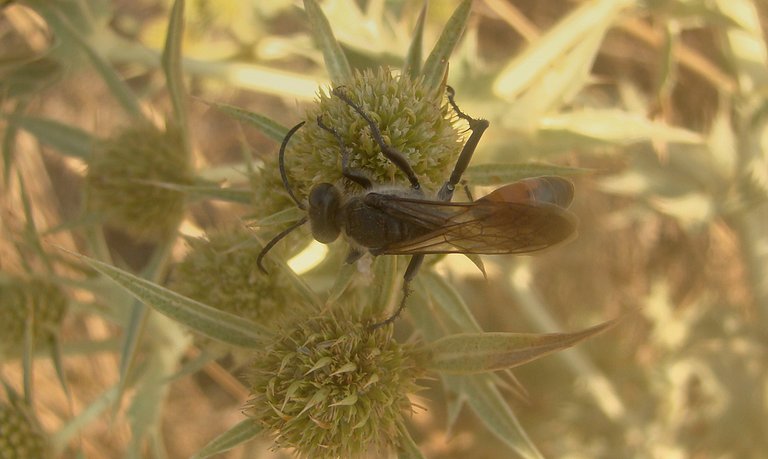
Here you can see a relatively big wasp. Probably from the genus Ammophila.
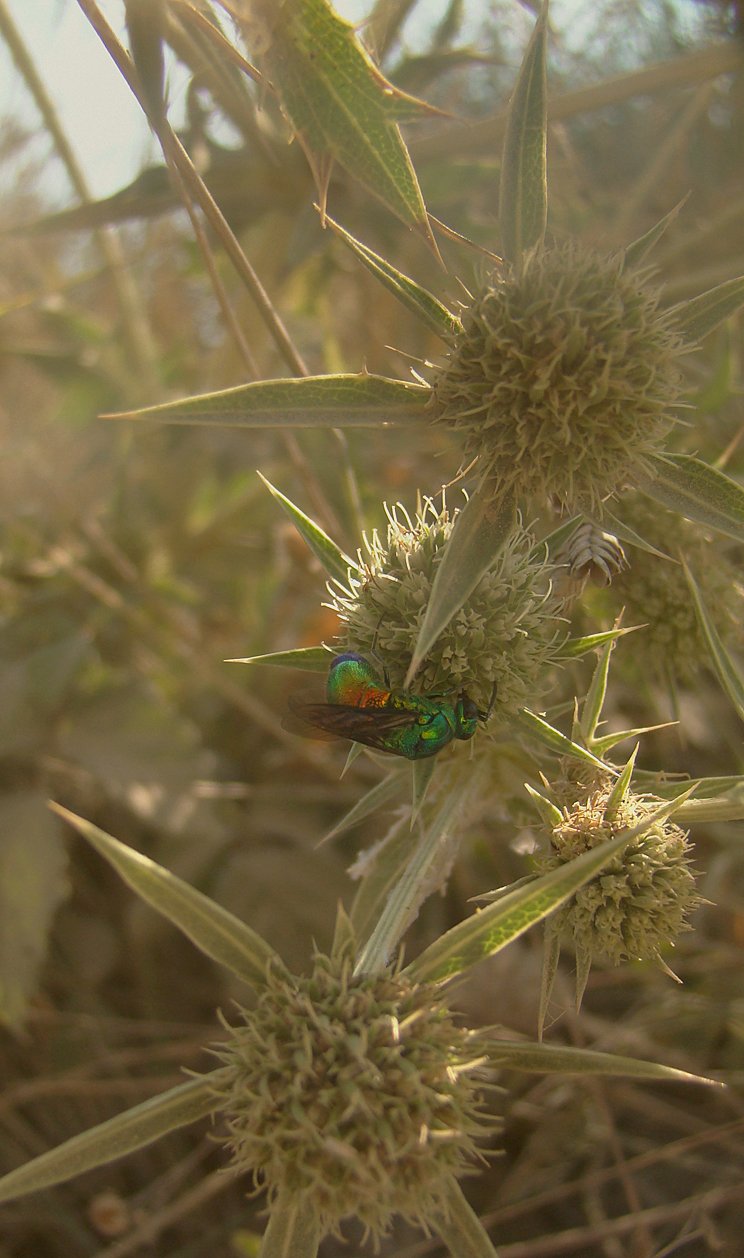
This is a shiny cuckoo wasp. I don't know the exact species, but the family is definitely Chrysididae.
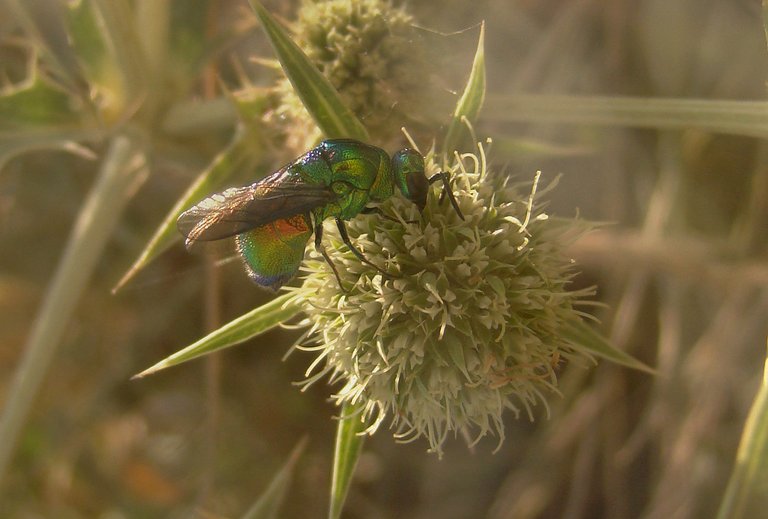
These small wasps that for their reproduction parasitize on various bees and wasp species look like little jewels that can come in many colors.
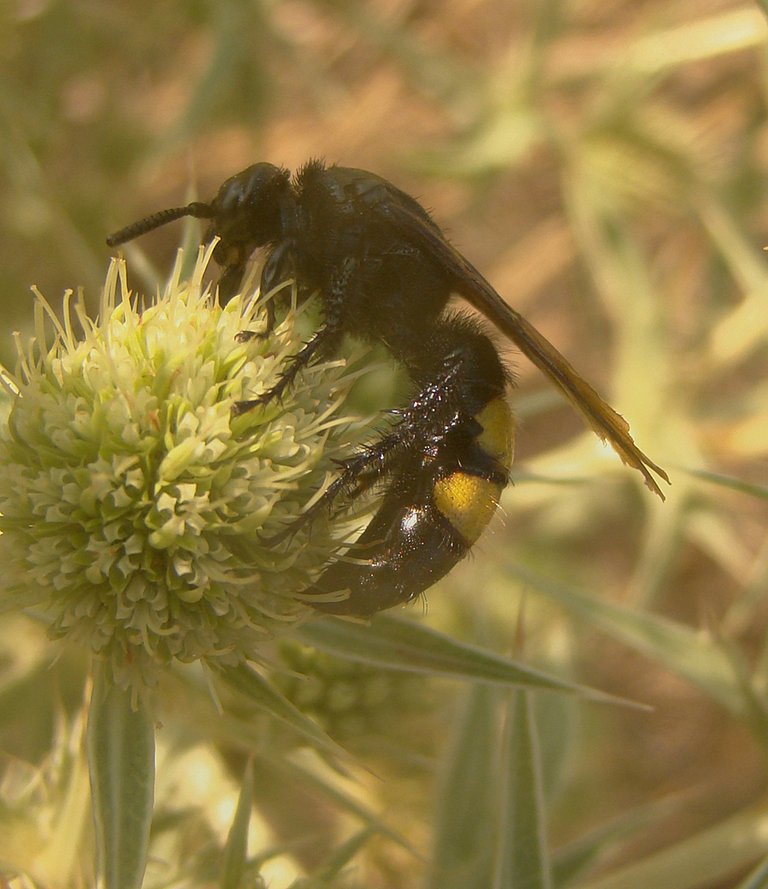
This is a much bigger wasp. Scolia hirta is the name of the species. As adults, they feed on nectar, but the larvae need some meat for their development. The females fill their nests in the ground with paralyzed larvae of the beetles from the Scarabaeidae family, especially the Green rose chafer (Cetonia aurata).
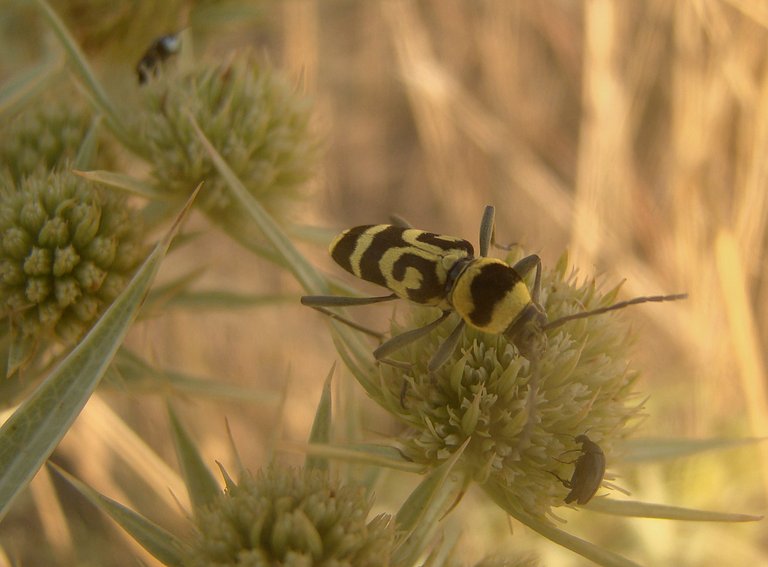
The colorful Longhorn beetle in this photograph is the Chlorophorus varius. It looks like a wasp from a distance. On that same flower, near the Longhorn beetle, you can see a small black beetle from the Mordellidae family.

This is the Xylocopa violacea, a big carpenter bee.
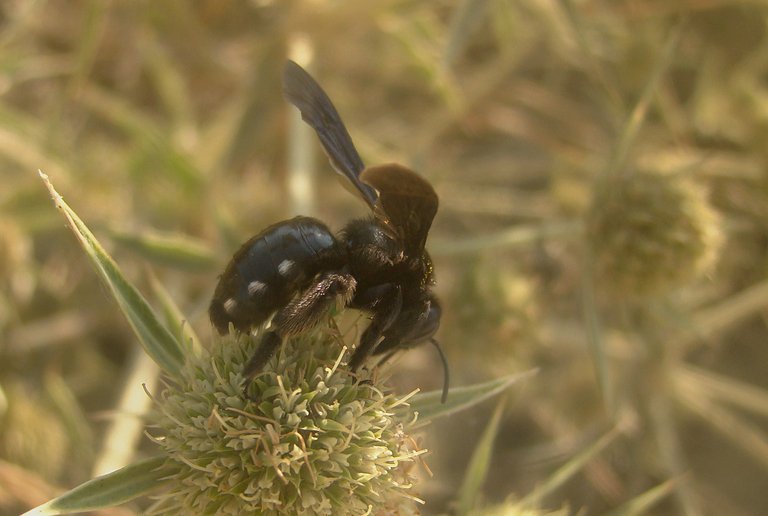
This bee is similarly colored but is considerably smaller.

I don't know the exact species.

Here you can see yet another Sphecodes monilicornis.
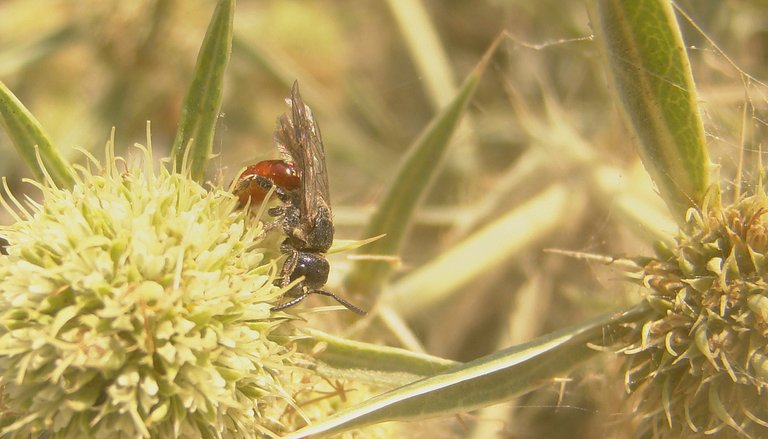
These bees are very numerous on the sunny meadows near the sea ...
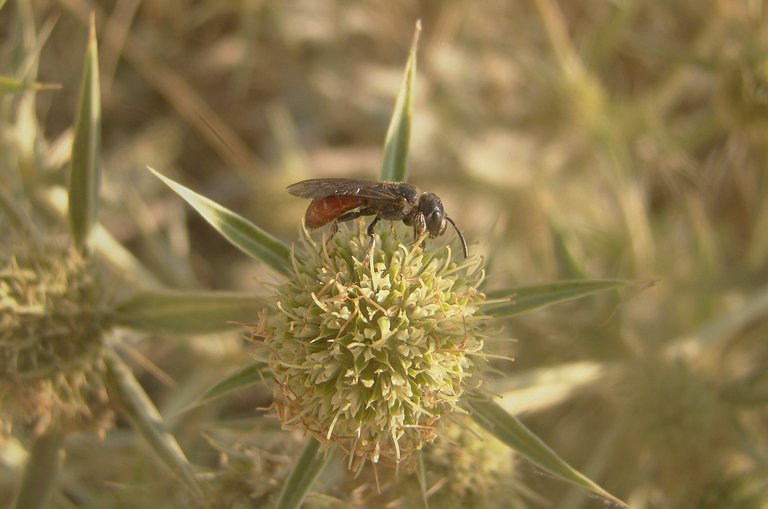
... so they ended up on quite a few photographs.
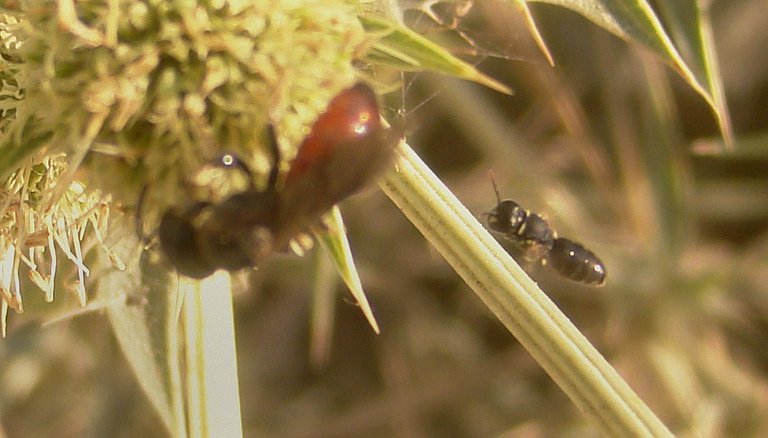
Here, the Sphecodes monilicornis bee is blurred in the foreground, while the smaller Yellow-faced bee is flying towards the flower.
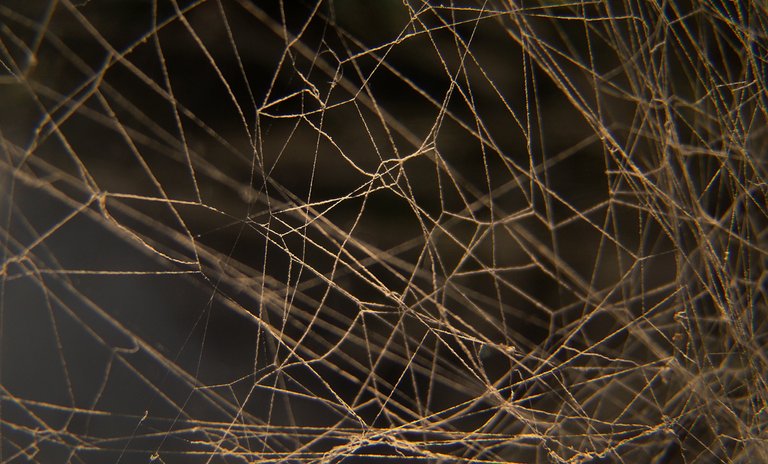
Here you can see some threads made by a spider or a caterpillar and made very visible by the layer of dust that covers them.
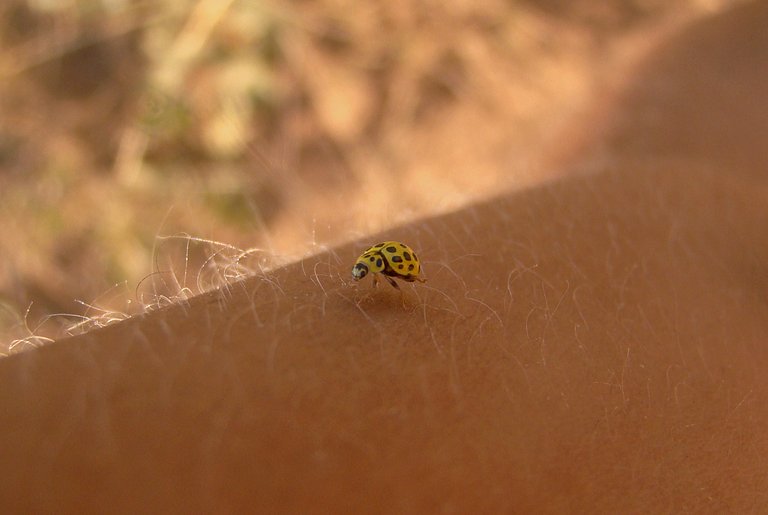
At one point, while I was walking along the dusty road that leads to the sea ...
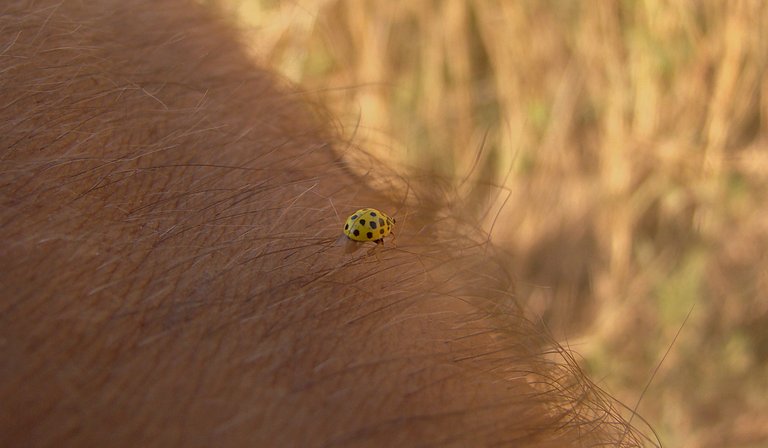
... a minuscule lady beetle landed on my arm. This is the Psyllobora vigintiduopunctata lady beetle.

These are the fruits of the honeysuckle plant (Lonicera periclymenum) that grows among the shrubs along the road.
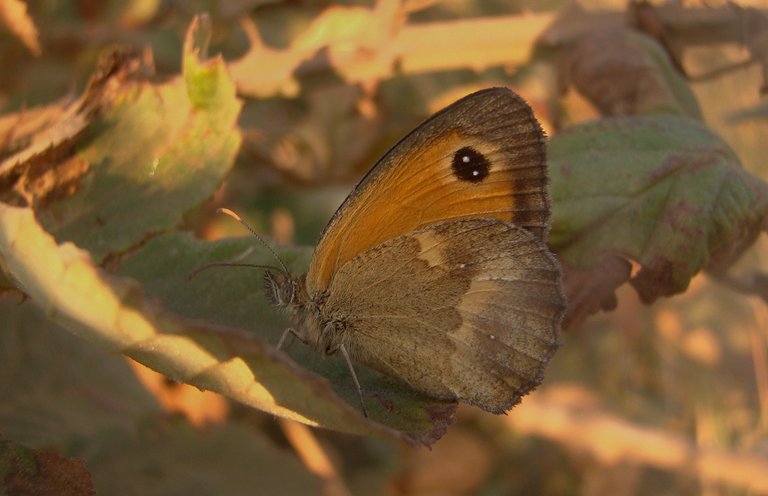
This Pyronia tithonus butterfly ...
... is resting on the blackberry shrub.
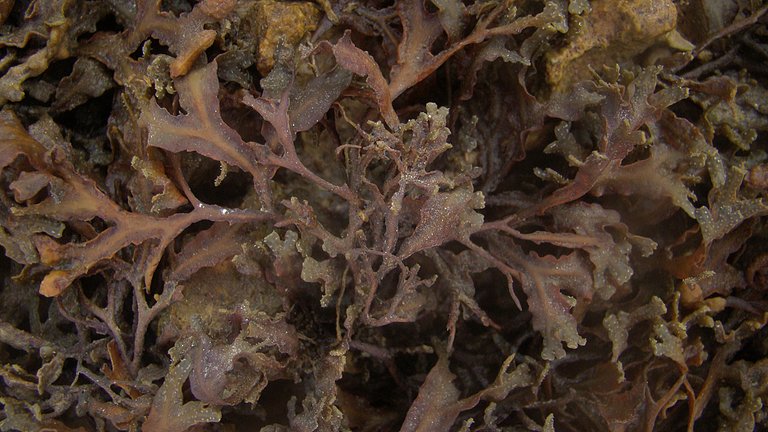
When I reached the sea, the tide was low, so I photographed these algae on the rocks in the intertidal zone.
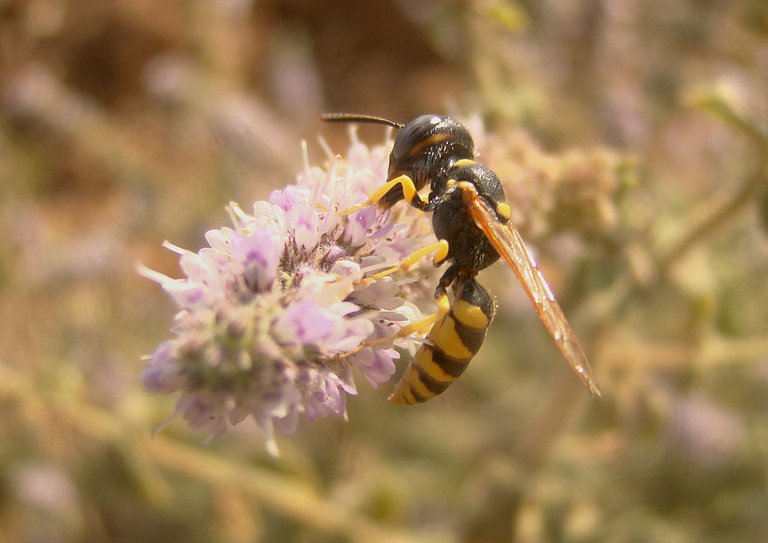
On the way back to the car I came across a group of Mentha Suaveolens plants. On their aromatic flowers, I photographed this bee-killer wasp, the Philanthus triangulum. The adults feed on nectar, but the larvae develop on paralyzed bees provided by the female. The species is commonly known as the European beewolf.
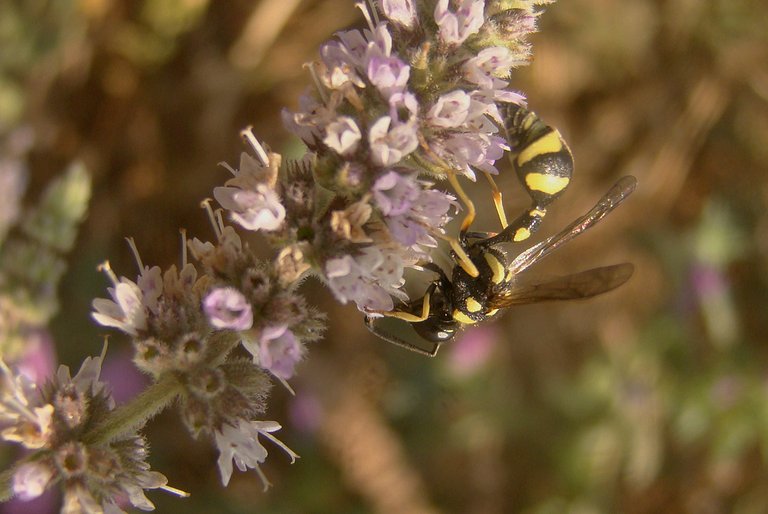
This elegant small wasp was also photographed there. I don't know which species is this.
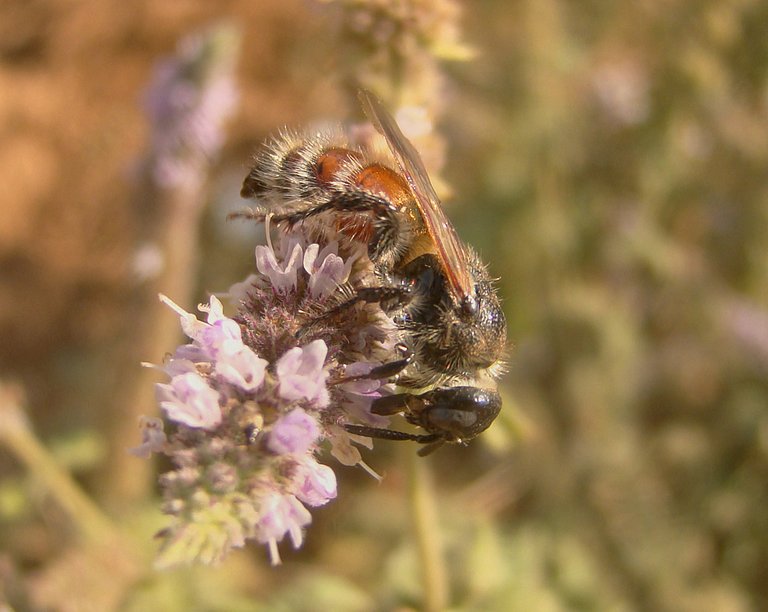
Here you can see some hairy wasp species. Or a bee. Sometimes is hard to tell.
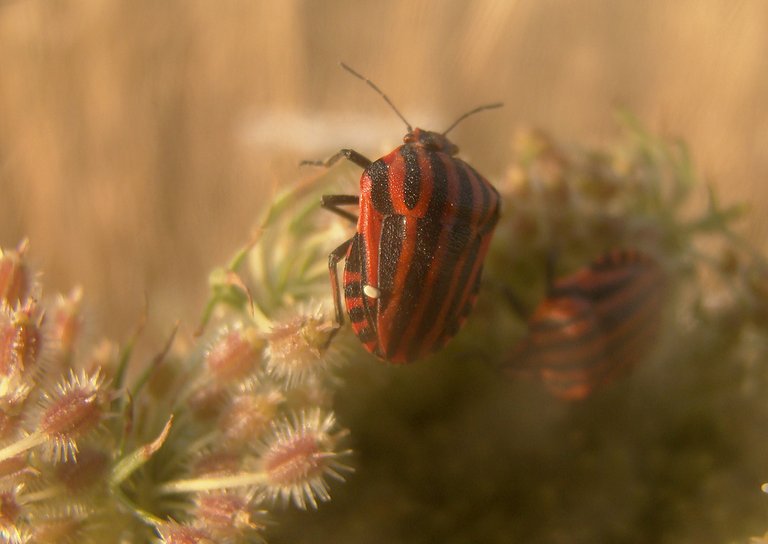
A bit further on the wild carrot plant (Daucus carota) ...
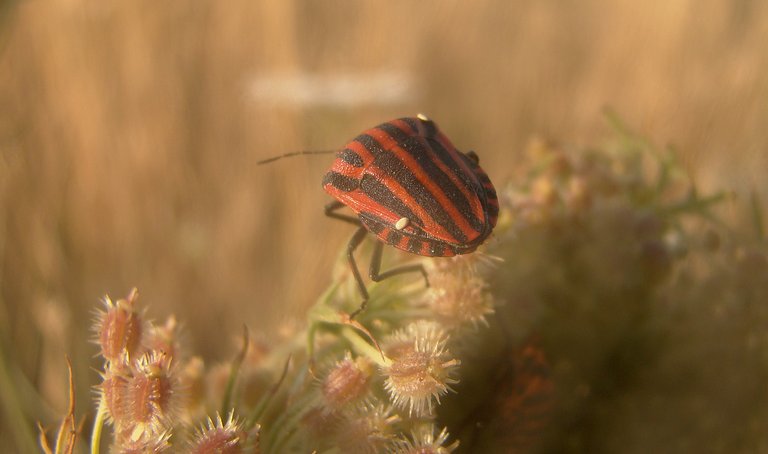
... I photographed these Graphosoma italicum bugs.
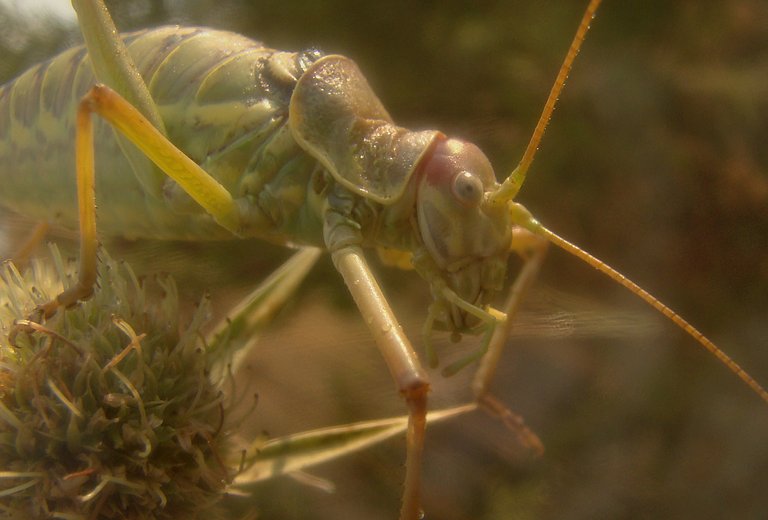
Not far from the car I found two Saddle-backed bush crickets. One was green ...
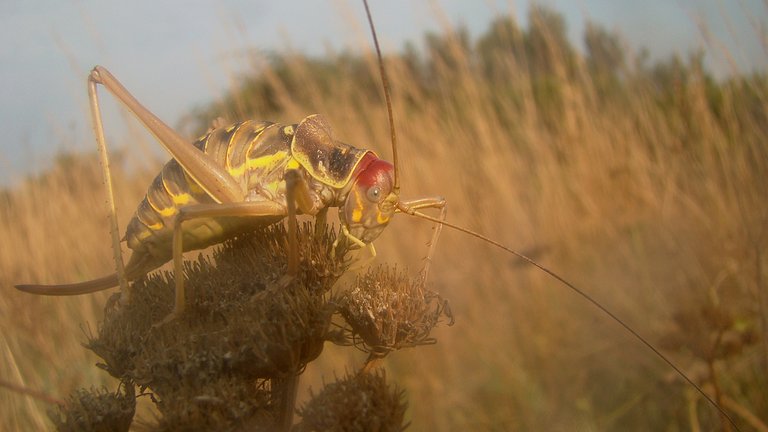
... the other one was black and yellow with an intensely red head.
As always in these posts on HIVE, the photographs are my work - THE END.
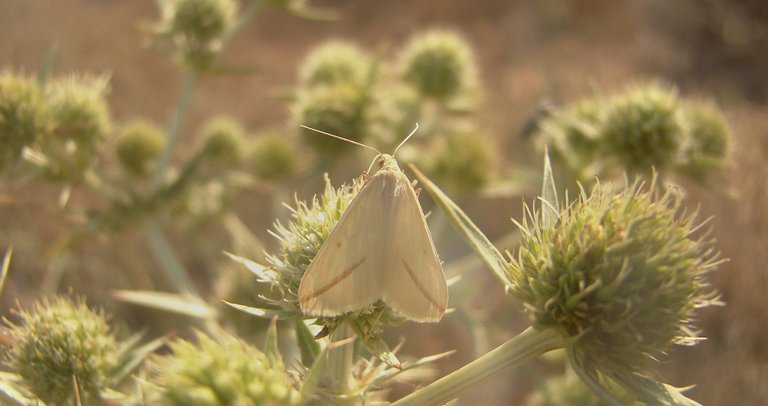
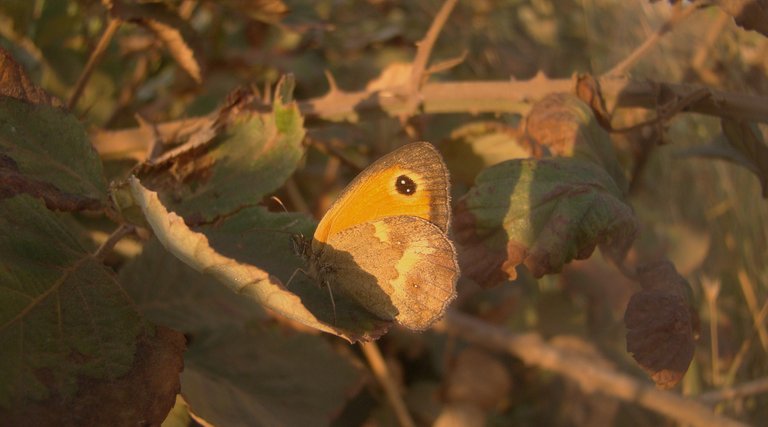
Those Graphosoma italicum bugs look like ladybugs on steroids :D
:D the dots tend to turn into stripes on steroids.
Beautiful shots.
They seem to have a bunch of species.
And probably they are different in different regions.
Like the one in this picture that I took is in my region.
Yes, there is a lot of diversity around the world. This wasp doesn't live in my area. It looks pretty big.
The Sphecodes monilicornis wasp just sounds like a straight up dick. Actually a bunch of the other bugs do as well. There is something distasteful and gross about parasites.
It’s amazing how you know these names and their species. I love the fact that I get to learn them from you.
The Internet helps me find the names of the species. :)
Nice one. Funny enough I’m scared of all these, I can’t even allow them to get in contact with me. lol
:)
This is lovely and I love every part of it. Keep up the good work.
Stunning photos as always. How come the backgrounds appear that way? Is it the weather?
Well, I love that of a butterfly with a black spot. It looks like the moon was up.
It's a bit the weather, a bit the lens and the camera settings, but without the sunny weather wouldn't be possible.
Oh, I got that now!
And again, I seemed to be plunged into the program from the National Geographics)
:)
Some of these little animal photos look so cool and majestic, and the photo shots of some of these little animals are taken so perfectly and are stunning...
thanks for sharing.
The variaty of insects flying around is just stunning. Thanks for sharing your old photos, @borjan. I'm glad you have kept them.
Thank you :) Glad you like the post.
Love the colors on the shiny cuckoo wasp. The markings on the Longhorn beetle sure are eye catching as are the Graphosoma italicum bugs.
Thanks for your contribution to the STEMsocial community. Feel free to join us on discord to get to know the rest of us!
Please consider delegating to the @stemsocial account (80% of the curation rewards are returned).
Please consider including @stemsocial as a beneficiary to get a stronger support.
Thank you.
excellent shots as always, my favorite is the wasp of metallic colors, greetings
Thank you :) Yes, shinny insects with metallic surfaces look great. They are among my favorites living creatures.
We appreciate your work and your post has been manually curated on behalf of Insects Of The World Community. It will be added to the weekly curation report. Keep up the good work
Thank you :)
wonderful shots as always
We appreciate your work and your post was manually curated by @none! from the DNA team!
Reach us on Discord to learn more about the project!
Thank you :)